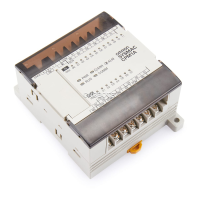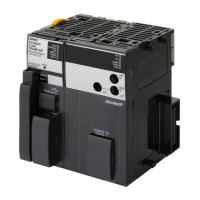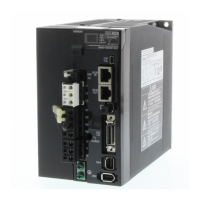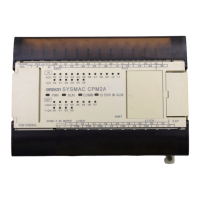Electrical Installation
3
3.3 Main Circuit Wiring
SIEPYEUOQ2A01A AC Drive Q2A Technical Manual 75
Terminals
Model
Function
4002 - 4044 4060 - 4168 4208 - 4675
• 400 V: C class grounding (ground to 10 Ω or less) To ground the drive.
Use terminals B1 and - to connect a CDBR-type control unit to drive models 4002 to 4168 that have built-in
braking transistors.
◆ Wire Selection
■ Wire Selection Precautions
WARNING! Electrical Shock Hazard. The leakage current of the drive will be more than 3.5 mA. The IEC/EN 61800-5-1: 2007
standard specifies that users must wire the power supply to automatically turn off when the protective ground wire disconnects.
Users can also connect a protective ground wire that has a minimum cross-sectional area of 10 mm
2
(copper wire) or 16 mm
2
(aluminum wire). Failure to obey these standards can cause death or serious injury.
Think about line voltage drop before selecting wire gauges. Select wire gauges that drop the voltage by 2% or less
of the rated voltage. Increase the wire gauge and the cable length when the risk of voltage drops increases.
Calculate line voltage drop with this formula:
Line voltage drop (V) = × wire resistance (Ω/km) × wiring distance (m) × motor rated current (A) × 10
-3
.
■ Precautions during Wiring
• Use terminals B1 and - to connect braking units to drives that have built-in braking transistors (models 4002 to
4168). Use terminals +3 and - to connect braking units to drives that do not have built-in braking transistors.
• Refer to “Braking Unit, Braking Resistor Unit Instruction Manual (TOBPC72060001)” for information about
wire gauges and tightening torques to connect braking resistor units or braking units.
• Use terminals +1 and - to connect a regenerative converter or regenerative unit.
NOTICE: Do not connect a braking resistor to terminals +1 or -. Failure to obey can cause damage to the drive circuitry.
■ Wire Gauges and Tightening Torques
• The recommended wire gauges are based on continuous current ratings of 75 °C (167 °F) 600 V class 2 heat-
resistant indoor PVC wire. Assume these conditions:
– Ambient temperature: 40 °C (104 °F) or lower
– Wiring distance: 100 m (3281 ft.) or shorter
– Normal Duty Rated current value
• Use terminals +1, +2, +3, -, B1, and B2 to connect a peripheral option such as a DC reactor or a braking resistor.
Do not connect other items to these terminals.
• Refer to the instruction manual for each device for recommended wire gauges to connect peripheral devices or
options to terminals +1, +2, +3, -, B1, and B2. Contact the manufacturer or your nearest sales representative if
the recommended wire gauges for the peripheral devices or options are out of the range of the applicable gauges
for the drive.
Select the correct wires for main circuit wiring.
Refer to Wire Gauges and Tightening Torques on page 174 for wire gauges and tightening torques as specified by
European standards.
Refer to Main Circuit Wire Gauges and Tightening Torques on page 192 for wire gauges and tightening torques as
specified by UL standards.
◆ Main Circuit Terminal and Motor Wiring
This section outlines the various steps, precautions, and checkpoints for wiring the main circuit terminals and
motor terminals.
WARNING! Electrical Shock Hazard. Do not connect the AC power line to the output terminals of the drive. Failure to obey can
cause death or serious injury by fire.
NOTICE: Make sure that you align the phase order for the drive and motor when you connect the motor to drive output
terminals U/T1, V/T2, and W/T3. Failure to obey correct wiring procedures can cause the motor to run in reverse if the phase
order is incorrect.
NOTICE: Do not connect phase-advancing capacitors or LC/RC noise filters to the output circuits. Failure to obey can cause
damage to the drive, phase-advancing capacitors, LC/RC noise filters, and leakage breakers (ELCB, GFCI, or RCM/RCD).

